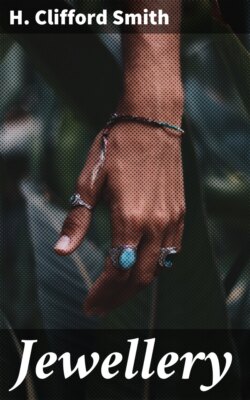Читать книгу Jewellery - H. Clifford Smith - Страница 11
На сайте Литреса книга снята с продажи.
ОглавлениеPLATE II
phœnician jewellery
Statues, like the Lady of Elché, show that Phœnician women wore three or four necklaces at the same time, one above the other; these vary in the size of their elements, from the small beads about the throat, to the large acorn-shaped pendants which hang low upon the breast. They display a striking admixture of Greek and Egyptian motives. Gold beads are often intermixed with small carnelian and onyx bugles, to which hang amphoræ formed alternately of gold or crystal. The Phœnicians were particularly skilled in the manufacture of glass: occasionally the sole materials of their necklaces are beads of glass. A necklace from Tharros in Sardinia, now in the British Museum, is formed of beads of glass and gold; of its three pendants, the centre one is the head of a woman with Egyptian coiffure, and the two others lotus flowers.
Finger rings are of all materials—gold, silver, bronze, and even glass. They are usually set with a scarab or scaraboid, fixed or revolving on a pivot. Silver is less common than gold; but in the British Museum is a ring of almost pure Greek workmanship from Cyprus which is entirely of silver, save for an exquisitely modelled golden fly that rests on the bezel.
